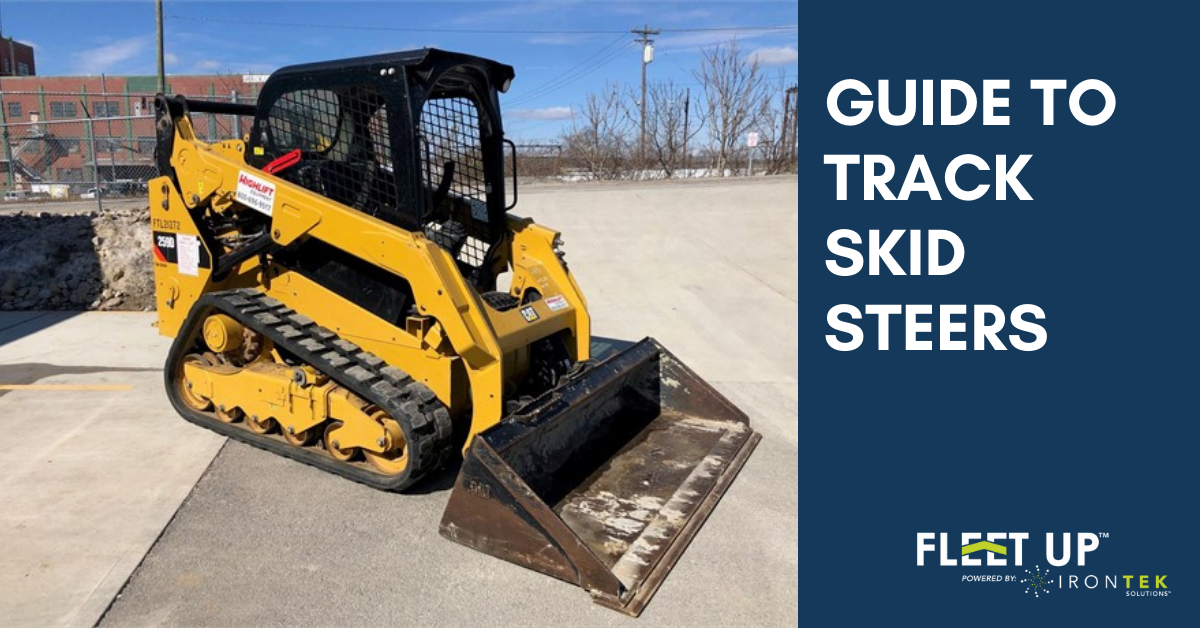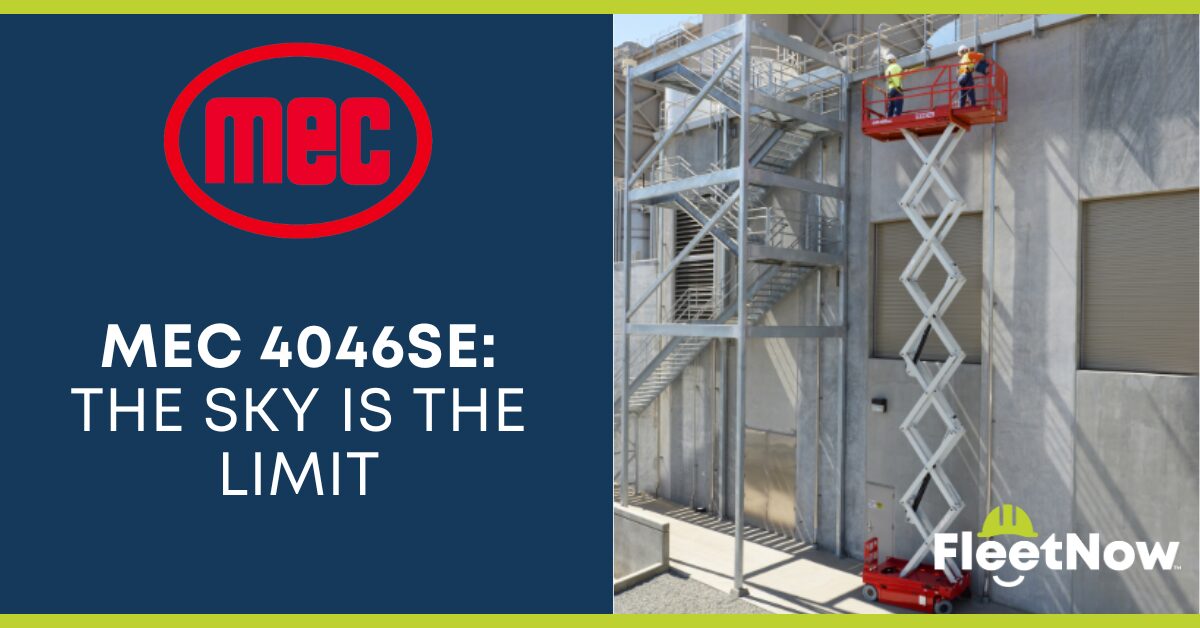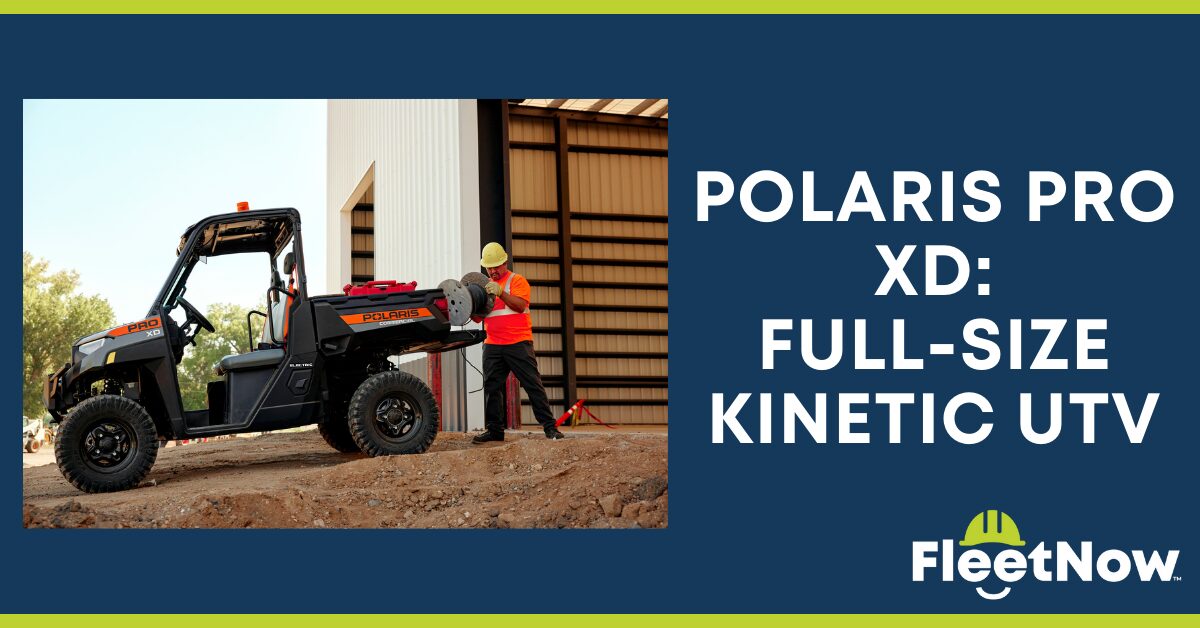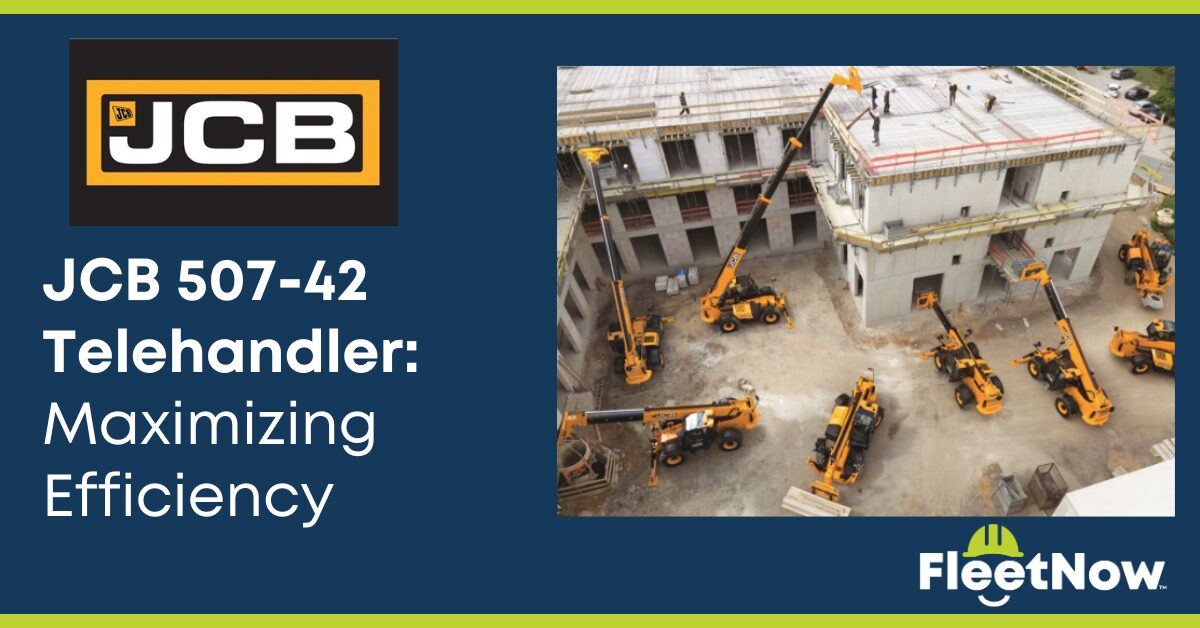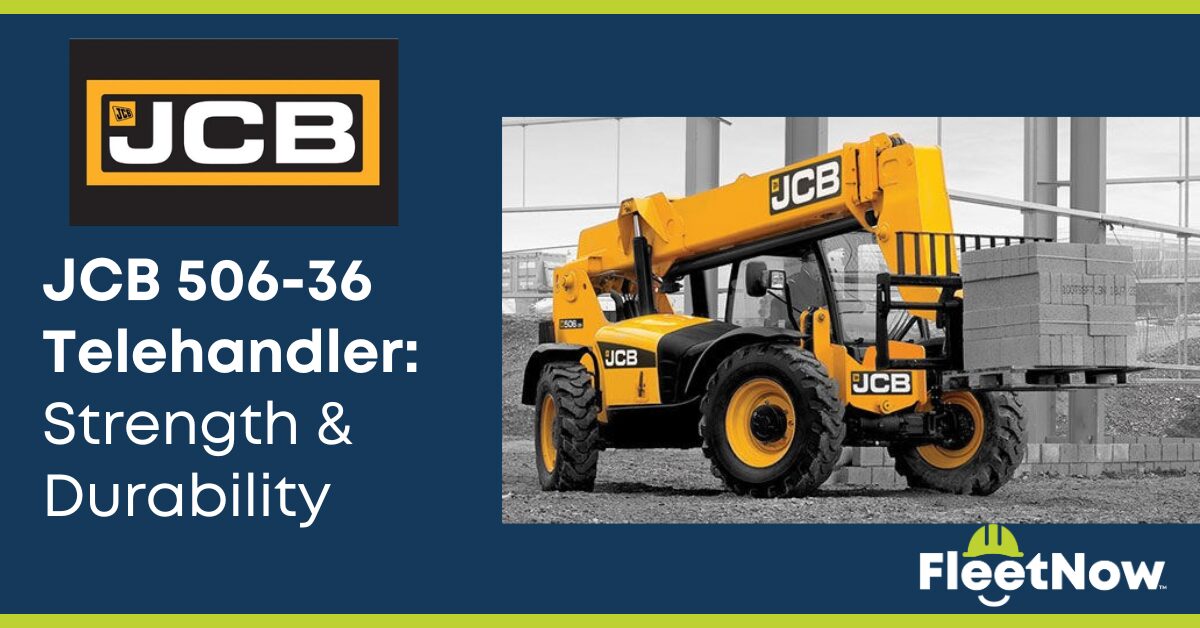Track skid steers are primarily used for digging, or lifting and moving heavy objects. These light and maneuverable vehicles, sometimes called “compact track loaders” or “multi-terrain loaders,” have rotating tracks and arms that can use attached tools for various construction and landscaping jobs.
The rotating tracks are designed to operate on difficult surfaces including rocky, sandy, muddy, and snowy terrains. The extra ground contact makes them a good choice for jobs where traction is a concern.
Watch this video for a closer look at JCB’s 3TS-8T Teleskid Compact Track Loader (CTL).
Track skid steers are available in vertical and radial lift types. Vertical lift track skid steers are designed to move taller loads and to move loads to spaces not easily reachable with a radial version. The radial lift design has fewer moving parts and works better for digging dirt or leveling ground.
The tracks come in either rubber or steel. Rubber tracks are best used for worksites with noise restrictions, soft surfaces, and flat surfaces. Steel tracks are best for rugged surfaces and for a superior ground grip.
Track Skid Steer uses
Track skid steers are often used for construction, forestry, roadway, and agricultural projects.
They are versatile and can accommodate a number of attachments including augers, buckets, hammers, brooms, trenchers, grapplers, and forks.
Track skid steers can meanuever through and work in tight spaces. They are good for jobsites that need a vehicle with high maneuverability and that can avoid ground damage.
How do track skid steers work?
Track skid steers can essentially “float” over soft surfaces. Their wheels and tracks do not turn, but the left and right sides can be driven separately thanks to their different engines.
If an operator wants to turn the vehicle, they must increase the speed of the tracks only on the side opposite the direction of the turn. The wheels on the inside of the turn will stay on a slower speed, which anchors the tun and causes the vehicle to skid.
Once the turn is complete, the operator can resume having both sides operate at the same speed.
The tracks create a more even weight distribution and increase contact with the ground. This allows track skid steers to have a higher lifting capacity and push more weight without slipping. Some also have increased horsepower, making them better for high-power jobs.
How many hours will a track skid steer work?
Tracks on track skid steers are designed to withstand rough terrain, and can take on a lot of pressure before maintenance is needed. Rubber tracks are expected to last between 1,200 to 1,600 working hours. Steel tracks are determined to last as least two and half times longer.
Some experts say the average lifespan of a skid steer is 5,000 hours.
Who makes track skid steers?
The top manufacturers of track skid steers are Bobcat, Caterpillar (CAT), John Deere, Case, and JCB.
Other brands include Asv, Gehl, Kubota, New Holland, Takeuchi, Terex, Toro, and Wacker.
Track skid steer Makes & Models
Asv: 2800, 4810, PT-30, PT-50, PT-60, PT-70, PT-80, PT-100, RC-30, RC-30 TURF EDITION, RC-50, RC-50 TURF EDITION, RC-60, RC-60 TURF EDITION, RC-85, RT-25, RT-30, RT-40, RT-50, RT-60, RT-65, RT-75, RT-75 HEAVY DUTY, RT-120, RT-120 FORESTRY, RT-135, RT-135 FORESTRY, SR-70, SR-80, VT-70, VT-70 HIGH OUTPUT
Bobcat: 864, MT52, MT55, MT85, T62, T64, T66, T76, T110, T140, T180, T190, T200, T250, T300, T320, T450, T550, T590, T595, T630, T650, T740, T750, T770, T870
Case: 420CT, 420CT SERIES 3, 440CT, 440CT SERIES 3, 445CT, 445CT SERIES 3, 450CT, 450CT SERIES 3, T550, T590, T630, T650, T750, T770, T870, TR270, TR310, TR310B, TR320, TR340, TR340B, TV370, TV370B, TV380, TV450B, TV620B
Caterpillar (CAT): 239D, 239D3, 247, 247B, 247B2, 247B3, 249D, 249D3, 257, 257B, 257B2, 257D, 259B3, 259D, 259D3, 267, 267B, 277, 277B, 277C, 277C2, 277D, 279C, 279C2, 279D, 279D3, 287, 287B, 287C, 287C2, 287D, 289C, 289C2, 289D, 289D3, 297C, 297D, 297D XHP, 297D2, 297D2 XHP, 299C, 299D, 299D XHP, 299D2, 299D2 XHP, 299D3, 299D3 XE, 299D3 XE LAND MANAGEMENT
Gehl: CTL60, CTL65, CTL70, CTL75, CTL80, CTL85, RT105, RT135, RT165, RT175, RT175 GEN:3, RT185, RT210, RT210 GEN:3, RT215, RT250 GEN:3, RT255, VT320
Hyundai: HSL1500T, HSL240T, HSL275T
JCB: 1110T, 150T, 180T, 190T, 210T, 215T, 250T, 260T, 270T, 300T, 320T, 325T, TELESKID 3TS-8T
John Deere: 317G, 319D, 323D, 325G, 329D, 329E, 331G, 333, 333D, 333E, 333G, CT322, CT332
Komatsu: CK20-1, CK25-1, CK30-1, CK35-1
Kubota: SVL65-2, SVL75-2, SVL75-2HFWC, SVL75-2HWC, SVL75-2W, SVL90-2, SVL95-2S, SVL95-2SHFC, SVL97-2
Mustang: 1050RT, 1350RT, 1650RT, 1750RT NXT3, 1850RT, 2100RT NXT3, 2150RT, 2500RT NXT3, 2550RT, 3200VT, MTL16, MTL20, MTL25
New Holland: C175, C185, C190, C227, C232, C234, C237, C238, C332, C337, C345, LT185.B, LT190.B
Sunward: SWTL4210, SWTL4518
Takeuchi: TL6, TL6R, TL8, TL8R, TL8R2, TL10, TL10V2, TL12, TL120, TL12R2, TL12V2, TL26, TL130, TL140, TL150, TL216, TL220, TL230, TL230 SERIES 2, TL240, TL250
Terex: 320, PT-30, PT-35, PT-50, PT-60, PT-70, PT-75, PT-80, PT30, PT50, PT60, PT70, PT80, PT-100G, PT-100G FORESTRY, PT-110, PT-110 FORESTRY, R070T, R160T, R190T, R265T
Toro: DINGO TX 420, DINGO TX 427, DINGO TX 525, DINGO TX 1000M, DINGO TX 1300, DINGO TX 2000
Volvo: MCT70C, MCT85C, MCT95C, MCT110C, MCT110D, MCT125C, MCT125D, MCT135C, MCT135D, MCT145C
Wacker Neuson: ST28, ST31, ST 35, ST 40, ST 45, ST 50
Yanmar: T175-1, T210-1

